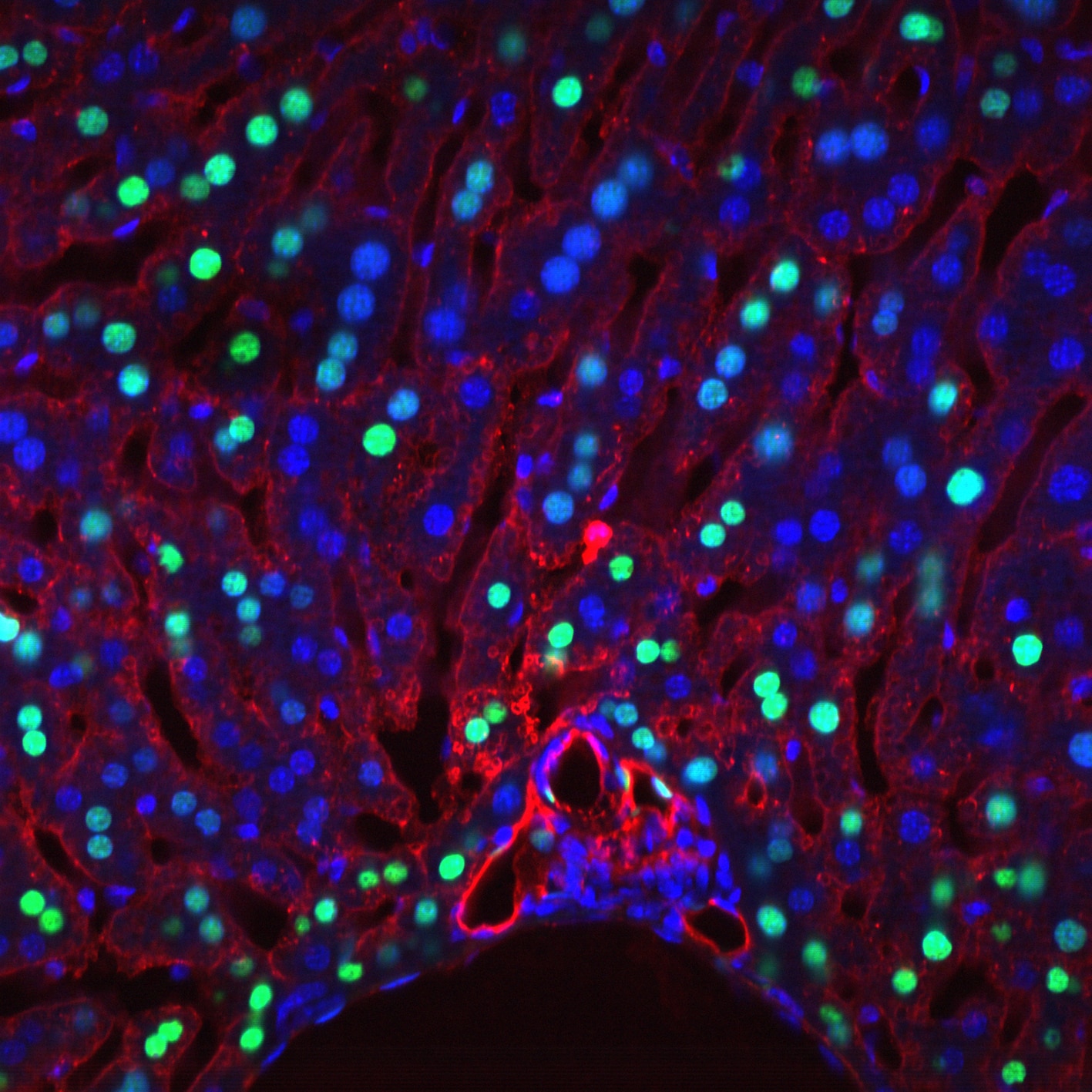Research Updates
Story of discovery: Genetic insights into pancreatitis: Since an NIDDK grantee’s discovery in the 1990s of the first genetic risk factor associated with pancreatitis, subsequent studies supported by the institute have identified a number of genetic variants associated with this disease. Pancreatitis is a disease marked by inflammation of the pancreas. A small gland located near the small intestine, the pancreas is responsible for producing enzymes that when mixed with bile from the gallbladder aid in the digestion of food, among other functions.
Structure of the human P2Y12 receptor identified in complex with an antithrombotic drug: P2Y receptors (P2YRs), a family of purinergic G-protein-coupled receptors, are activated by extracellular nucleotides. There are a total of eight distinct functional P2YRs expressed in people, which are subdivided into P2Y1-like receptors and P2Y12-like receptors. Their ligands are generally charged molecules with relatively low bioavailability and stability in vivo, which limits our understanding of this receptor family.

Sphingosine-1-phosphate receptor 1 reporter mice reveal receptor activation sites in vivo: Activation of the G protein-coupled receptor sphingosine-1-phosphate receptor 1 (S1P1) by sphingosine-1-phosphate regulates key physiological processes. S1P1 activation also has been implicated in pathologic processes, including autoimmunity and inflammation; however, the in vivo sites of S1P1 activation under normal and disease conditions are unclear. The development of a mouse model allows in vivo evaluation of S1P1 activation.
Soda consumption during ad libitum food intake predicts weight change: Objective data were used to determine whether soda consumption predicts weight gain or changes in glucose regulation over time. Subjects without diabetes self-selected their food from an ad libitum vending machine system for three days. Mean daily energy intake was calculated from food weight. Energy consumed from soda was recorded as were food choices that were low in fat or high in simple sugars.
Defining kidney biology to understand renal disease: A national dialogue: The Kidney Research National Dialogue represents a novel effort by NIDDK to solicit and prioritize research objectives from renal research and clinical communities. The commentary highlights selected scientific opportunities specific to the study of renal development, physiology and cell biology. Describing such fundamental kidney biology serves as a necessary foundation for translational and clinical studies that will advance disease care and prevention. It is intended that these objectives foster and focus scientific efforts in these areas in the coming decade and beyond.
Dialysis therapies: A national dialogue: NIDDK and the KRND asked the scientific community to formulate and prioritize research objectives that would improve understanding of kidney function and diseases. Kidney Research National Dialogue participants identified the need to improve outcomes in end-stage renal disease by decreasing mortality and morbidity and enhancing quality of life as high priority areas in kidney research. To reach these goals, researchers must identify retained toxins in kidney disease, accelerate technologic advances in dialysate composition and devices to remove these toxins, advance vascular access and identify measures that decrease the burden of disease in maintenance dialysis patients.
Improving CKD therapies and care: A national dialogue: NIDDK and the Kidney Research National Dialogue asked research and clinical communities to formulate and prioritize research objectives that would improve understanding of kidney function and diseases. This commentary outlines the high-priority research objectives for chronic kidney disease. The goal of these research objectives is to enhance knowledge to improve outcomes in people with chronic kidney disease. Basic and translational research, longitudinal observations and epidemiologic studies can each point to targets for intervention.
